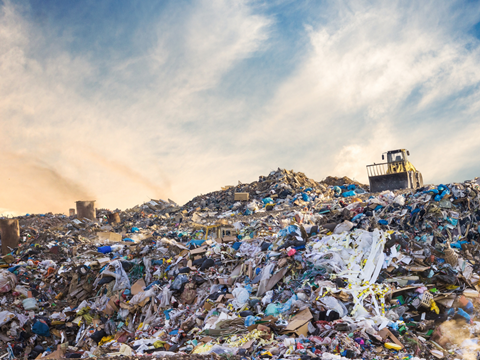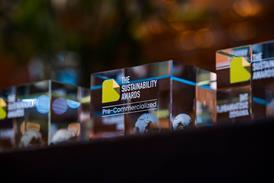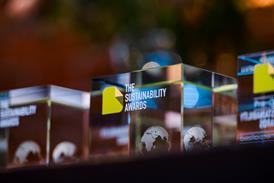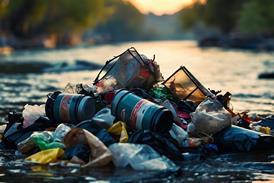
Findings from the Forever Lobbying Project suggest that cleaning all the PFAS contamination in Europe would cost upwards of €2 trillion over a twenty-year period, the accumulation of a €100 billion annual toll.
PFAS, or per- and polyfluoroalkyl substances, are defined as synthetic chemicals frequently used in food packaging, among other applications. In this case, they leach into the environment when the packaging is landfilled – migrating through soil, leaching through rainwater or stormwater runoff, leaking from flawed containment systems, or exiting as gas emissions.
They are considered indestructible without human intervention, with any that do break down simply generating new PFAS. As such, almost every PFAS molecule ever synthesized is still thought to be in the environment.
Short-chain and ultrashort-chain PFAS such as trifluoroacetic acid (TFA) are small enough to bypass most water filters and enter animal and human cells. So far, PFAS have been found in the blood, urine, tissues, and organs of living creatures, passing on to offspring via the placenta, milk, and eggs.
Among their adverse health effects are liver disease; damage to the nervous system; kidney and testicular cancer; and reproductive and developmental problems.
Tackling only the most concentrated sources of long-chain PFAS in Europe is feared to amount to €4.8 billion a year. In a separate cost, even the partial removal and destruction of short-chain and ultrashort-chain PFAS set to cost around €100 billion every year, which will total €2 trillion over twenty years.
These figures were calculated by Ali Ling from the University of St. Thomas’ School of Engineering; Hans Peter Arp from the Norwegian University of Science and Technology and the Norwegian Geotechnical Institute; Raphaëlle Aubert from Le Monde; and Eurydice Bersi from Reporters United.
Five European countries are said to have proposed a ‘universal restriction’ on PFAS under the REACH regulation in February 2023, encompassing all PFAS chemicals with some derogations until alternatives can be found. The Forever Lobbying Project accuses ‘hundreds of industry players defending the interests of around 15 sectors’ of lobbying European decisionmakers to water down or even prevent the proposal.
It also alleges that, when the chemical industry faced legal and regulatory threats restricting the use of the ‘first generation’ of PFAS, it created smaller PFAS that are ‘just as indestructible and even more mobile’.
Back in February 2023, the European Chemicals Agency proposed the restriction of around 10,000 PFAS on its website. Responding to predictions that around 4.4 million tonnes of PFAS would end up in the environment over the next 30 years at current rates, the proposal was open to evaluation of its environmental, social, and health impacts.
The European Parliament also approved the prohibition of PFAS in food-contact packaging above certain thresholds in a vote on the Packaging and Packaging Waste Regulation in April 2024. Now the regulation has been formally adopted, the packaging industry will be expected to minimize their use of substances of concern, including food-contact packaging containing PFAS in certain amounts.
In the meantime, industry players are seeking to reduce PFAS in their food packaging solutions, from Carccu’s renewable, PFAS-free greaseproof papers to PA Consulting and Searo Labs’ seaweed-based packaging lineup.
If you liked this story, you might also enjoy:
The ultimate guide to the Packaging and Packaging Waste Regulation in 2024
How are the top brands progressing on packaging sustainability?
Sustainable Innovation Report 2024: Current trends and future priorities
Everything you need to know about global plastic sustainability regulation


















No comments yet